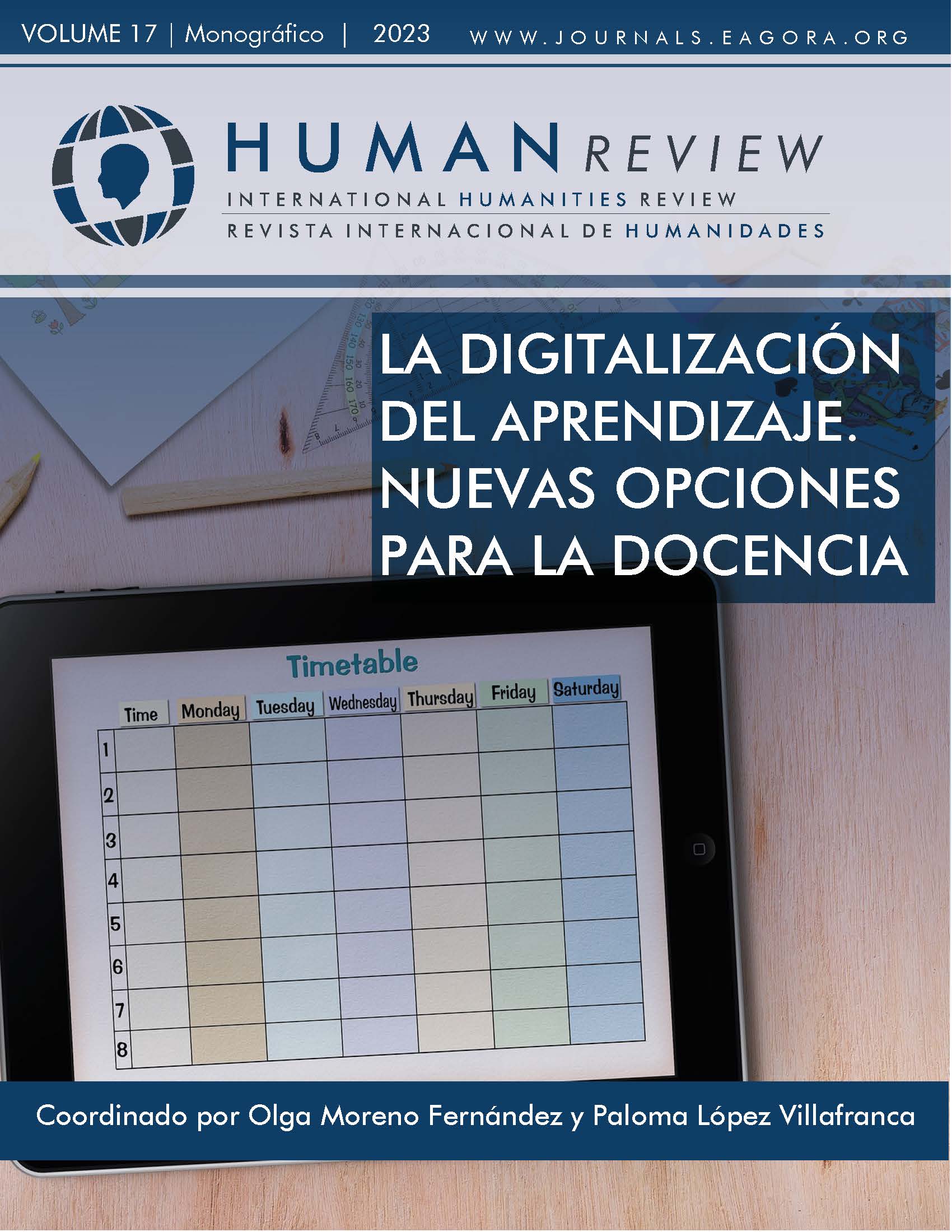Learning physics with your smartphone
DOI:
https://doi.org/10.37467/revhuman.v12.4757Keywords:
Education, Kinematics, Smartphone, Physical, Usability, Learning, ApplicativeAbstract
The educational process underwent a drastic change due to the pandemic we suffered worldwide, we had to learn to use technological tools in teaching and learning. Therefore, following this trend, we proposed the use of the application “Physics M-Lab” in its first version for the teaching of kinematics.
As we are in the field of social sciences, we used a quasi-experimental design thatallowed us to conclude that learning improved significantly.
References
Abejón Mendoza, P., Carrasco Polaino, R. y Garralón, M. (2019). Efecto de los post en Facebook de los principales candidatos españoles en las elecciones generales de 2016 sobre la polarización de la sociedad. Historia y Comunicación Social, 24(2), 599-613. https://doi.org/10.5209/hics.66302
Aladro Vico, E. (2020). Comunicación sostenible y sociedad 2.0: particularidades en una relación de tres décadas. Revista de Comunicación de la SEECI, 53, 37-51. https://doi.org/10.15198/seeci.2020.53.37-51
Atencio, W., & Blas, K. (2017). Uso de apps móviles en el desarrollo de capacidades del área de ciencia, tecnología y ambiente en estudiantes del tercer grado de secundaria del colegio 34036 Sagrada Familia de Simon Bolivar-Pasco 2017 [Licenciado, Universidad Daniel Alcides Carríon]. Repositorio institucional. Obtenido de http://repositorio.undac.edu.pe/bitstream/undac/690/1/TESIS-2017.pdf
Barquero Cabrero, J.D., Caldevilla Domínguez, D., Barrientos Báez, A. & Gonzálvez Vallés, J.E. (2022). Social networks as a vehicle for happiness management in university governance. Corporate Governance, 22(3), 521-535. https://doi.org/10.1108/CG-05-2021-0182
Blitz-Raith, A. H., & Liu, J. (2017). Interactivity in educational apps for young children: A multimodal analysis. International Journal of Instruction, 10(4), 237–254. https://doi.org/10.12973/iji.2017.10414a
Churchill, D. (2012, 17-18 September). Towards recommendations for design of educational apps [Conferencia]. The 2nd Annual International Conference on Education & e-Learning (EeL 2012), Bali, Indonesia.
González, M. Á., Martínez, Ó., Cañedo, J. C., Huete, F., Esteban, D., Manso, J., Bento Da Silva, J., Rochadel, W., & González, M. Á. (2015). Doing Physics Experiments and Learning with Smartphones. TEEM ’15: Proceedings of the 3rd International Conference on Technological Ecosystems for Enhancing Multiculturality, 303–310. https://doi.org/doi.org/10.1145/2808580.2808626
Gutiérrez-Muñoz, J. (2007). La física, ciencia teórica y experimental. Vivat Academia, 89, 24–41. https://doi.org/10.15178/va.2007.89.24-41
Internacional Organization for Standardization. (1999). Human-centred design processes for interactive systems (ISO Standard No. 13407:1999). Suiza. Recuperado de https://www.iso.org/standard/21197.html
Kapp, K. M. (2012). The gamification of learning and instruction: game-based methods and strategies for training and education (1st Ed.). John Wiley & Sons.
Kim, J., Gilbert, J., Yu, Q., & Gale, C. (2021). Measures Matter: A Meta-Analysis of the Effects of Educational Apps on Preschool to Grade 3 Children’s Literacy and Math Skills. AERA Open, 7. https://doi.org/10.1177/23328584211004183
Lorés, J., & Granollers, T. (2004). La ingeniería de la usabilidad y de la accesibilidad aplicada al diseño y desarrollo de sitios web. Universitat de Lleida. shorturl.at/ijp57
MINEDU. (2016). Programa Curricular de Educación Secundaria. Ministerio de Educación. http://www.minedu.gob.pe/curriculo/pdf/programa-curricular-educacion-secundaria.pdf
Morales, L. M., Mazzitelli, C. A., & Olivera, A. d. C. (2015). La enseñanza y el aprendizaje de la Física y de la Química en el nivel secundario desde la opinión de estudiantes. Revista Electrónica de Investigación en Educación en Ciencias, 10(2), 11-19.
Noble, D., & Russell, A. C. D. (2013). Research on webbed connectivity in a web-based learning environment: Online social work education. Journal of Teaching in Social Work, 33, 496-495
Resnick, R., Halliday, D. & Krane, K. (2001). Física 1 (4ª ed.). Compania Editorial Continental. https://eva.fing.edu.uy/mod/folder/view.php?id=116130
Rodríguez Ramírez, I. (2015). Incorporación del tema de usabilidad en el diseño de sitios web en el curso de Multimedios. Revista Educación, 39(2), 27. https://doi.org/10.15517/revedu.v39i2.19896
Rojas Poma, L.C. (2018). Indagación científica como estrategia y su efecto en el desarrollo de la competencia indaga en los estudiantes del cuarto año de secundaria en el área de ciencia, tecnología y ambiente de la I.E. 3080 “Perú Canadá”, Los Olivos, 2017 [Tesis de para optar el grado académico de maestra en educación, Universidad Cesar Vallejo]. https://repositorio.ucv.edu.pe/bitstream/handle/20.500.12692/14993/Rojas_PLC.pdf?sequence=1&isAllowed=y
Sears F. W., Zemansky M. W., Young H. D. & Freedman R. A. (2009). Física Universitaria (12ª ed.). Pearson Education.
Wilson, J., Buffa, A., & Lou, B. (2007). Física (6ª ed.). Pearson Education.
Zichermann, G., & Cunningham, C. (2011). Gamification by Design Implementing Game Mechanics in Web and Mobile Apps (M. Treseler (ed.); 1st ed.). O’Reilly.
Downloads
Published
How to Cite
Issue
Section
License
Those authors who publish in this journal accept the following terms:
- Authors will keep the moral right of the work and they will transfer the commercial rights.
- After 1 year from publication, the work shall thereafter be open access online on our website, but will retain copyright.
- In the event that the authors wish to assign an Creative Commons (CC) license, they may request it by writing to publishing@eagora.org









